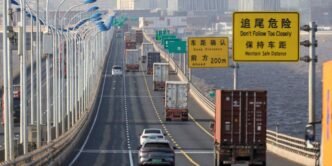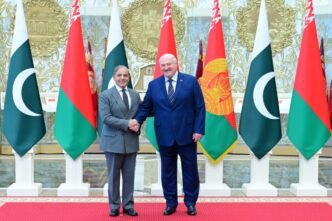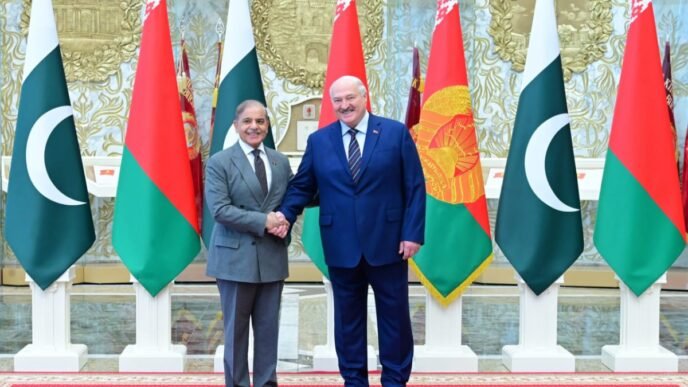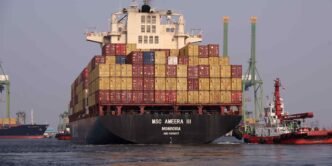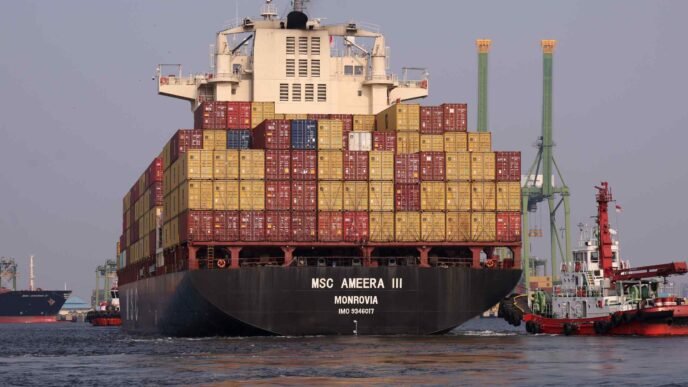Hello from Tokyo. As I explained in last week’s newsletter, Nikkei Asia delivers global news from an Asian perspective to our readers around the clock. Our team in Asia, led by our staff in Tokyo, reports and edits late into the night before handing over homepage operations to the editorial team in New York. The U.S. team covers news that breaks when Asia is sleeping, and the Tokyo team takes over again the next morning to provide fresh updates for our readers.
Planning our coverage is essential to delivering high-quality journalism to our readers. At Nikkei Asia, editors meet on weekday evenings (Asian time) to discuss the publishing schedule for the following day.
U.S. President Donald Trump has been disrupting our plans almost every morning since he took office in Janu. On early Thursday morning in Asia, his trade policy took a significant turn as he announced a 90-day reprieve on “reciprocal” tariffs, which had taken effect just a day earlier. When we wake up in Asia and log in to Nikkei Asia’s website, the situation surrounding the global economy is often completely different from the day before — with Asian stock markets especially impacted by Trump’s tariff flip-flops.
According to a market analysis piece we published on Monday, Tokyo reacts more sharply to announcements from the Trump administration than other markets. There are many reasons for this, but one is the time difference between the U.S. and Japan. As the first major stock market to open during the global trading day, Tokyo is often the most affected by weekend developments and overnight statements from the White House.
While delivering well-planned articles, Nikkei Asia also responds swiftly to unpredictable global events, providing accurate reporting and analysis. Our very hardworking editor in charge of China — who’s been closely tracking Beijing’s reactions to Trump’s announcements — told me that he’s started “dreaming about the tariffs.” I invite you to visit Nikkei Asia, day or night, and explore our latest coverage.
My suggested reads
1. Suppliers to Apple, Samsung, HP and more are racing to avoid U.S. President Donald Trump’s punishingly high “reciprocal” tariffs. But with all of their favored production bases targeted, including Vietnam and Thailand, where can they run to?
2. U.S. President Donald Trump has raised tariffs on China to a staggering 145%. But he faces a formidable challenge in the form of tens of thousands of Chinese logistics companies that experts believe help merchants minimize the impact of duties.
3. Indonesia has the lowest insurance penetration rate among Southeast Asia’s major economies. But industry executives believe this long-standing reluctance to buy cover — whether for health, vehicles, life or buildings — is starting to change, particularly among the younger generation as more online products become available.
4. Osaka is the epicenter of a tourism-driven property investment boom, a rare bright spot in the otherwise sluggish global real estate market. Japan’s second-largest city is set to move further into the limelight with the opening on Sunday of Expo 2025, the latest running of the 174-year-old World Expo series.
5. It wasn’t long ago that success in Asia’s music industry was measured by album sales, radio play and sold-out concerts. But the rise of streaming services and social media has reshaped the landscape — offering artists more independence but also greater competition and financial uncertainty.
Through the lens
This week’s top photo pick: A supporter of South Korean President Yoon Suk Yeol holds a placard saying “Dismiss impeachment” as the verdict against him was awaited, on April 4 in Seoul.
Later that day, South Korea’s Constitutional Court upheld the legislature’s decision to impeach Yoon, immediately ousting him from office. The country has 60 days to elect a new leader, and voting for the new president is to take place on June 3. (Photo by Kim Soo-hyeon/)
Check out more of our photo coverage here.
Wishing you a wonderful weekend!
Akito Tanaka
Sign up for the weekly Editor-in-chief’s picks newsletter here.
Follow us on LinkedIn and instagram.





